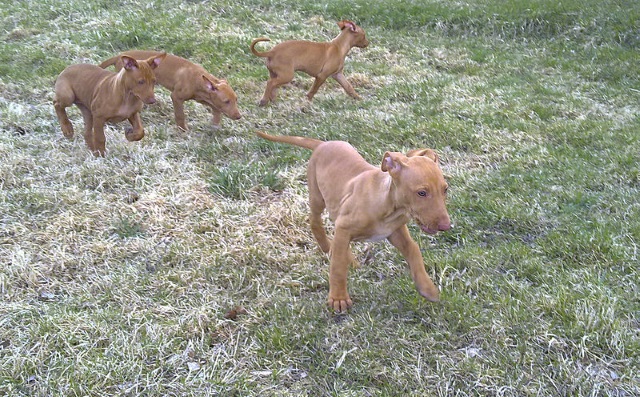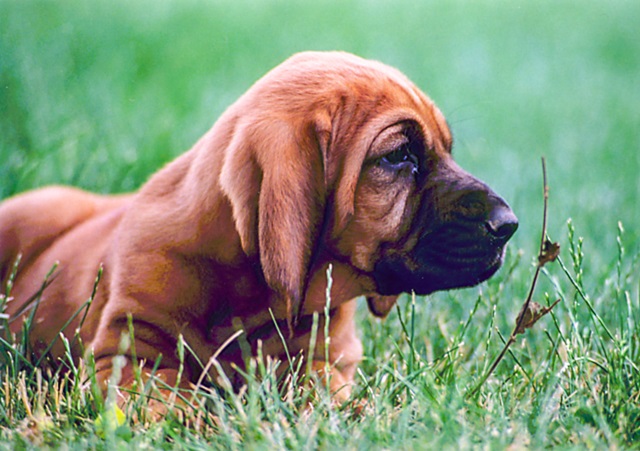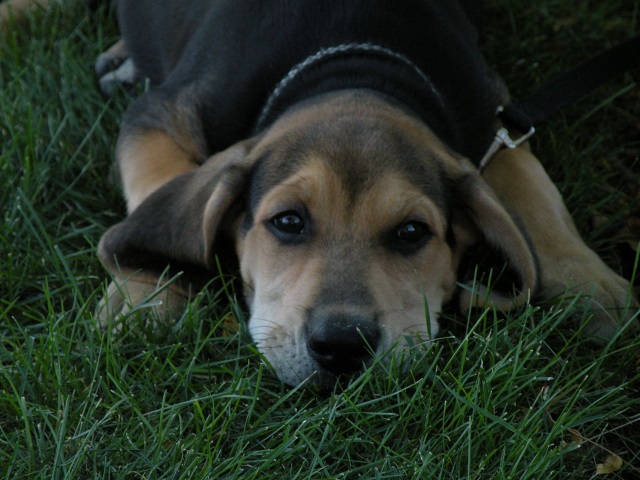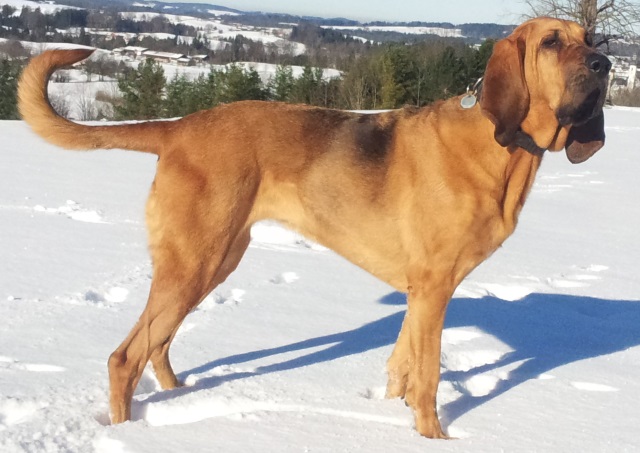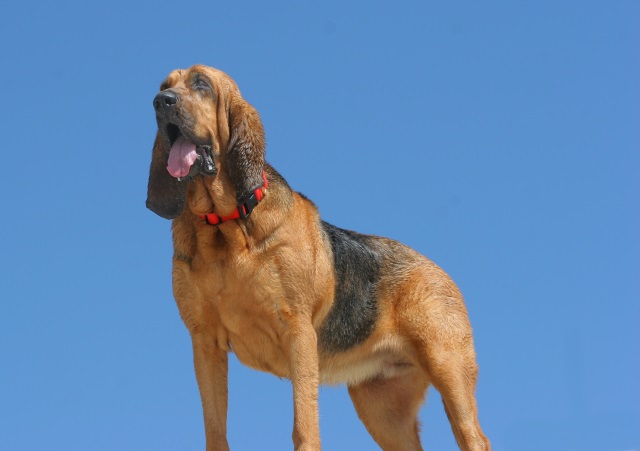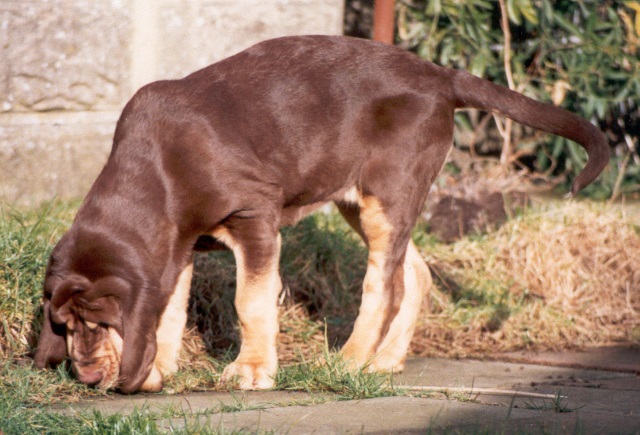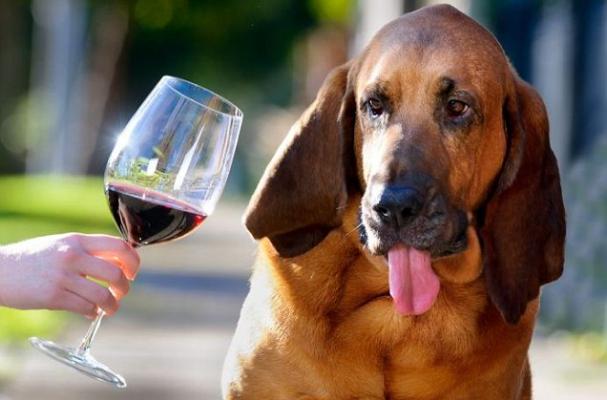There’s just something really sweet, really endearing, and really lovable about the sunken, deeply furrowed, and wrinkly face of a bloodhound that pulls people in and makes them fall in love with this breed of dog every single year. A lot of folks know bloodhounds as the baying hounds that chase all kinds of game through the forest – and sometimes were used by prison wardens and guards in the South to chase prisoners that had escaped – but there’s so much more to this breed than the usual caricature like perception that a lot of people have.
Origin and History
Breeds of dog like the bloodhound have existed for hundreds and hundreds of years, leveraged by noblemen throughout the UK to track game and hunt. And while these dogs are quite capable of smelling the trail of most any game animal they have been trained to find, the reason they have “blood” in their name has nothing to do with their aggressiveness in the chase but instead because of the fact that they were considered “blooded” hounds that had ancestry and lineage recorded down on paper.
Today’s modern iteration of the bloodhound breed originates back to the early eighth century in France. Descendants of the St. Hubert hound, these bloodhounds were charged with tracking down some of the most dangerous game in the region, the wild boar that would kill a man without any effort whatsoever.
William the Conqueror brought St. Hubert hounds with him when he poured into England in 1066, and it was here – in England – that these hounds eventually morphed into the bloodhound that we know today (though it took about 800 years to do so).
Today, bloodhounds are world-famous for their ability to track an almost any condition whatsoever. Beloved by the police community, they are still on select teams of law enforcement departments, and the testimony of bloodhounds is even accepted in US courts!
Appearance
Your average bloodhound weighs in at between 80 pounds and 160 pounds, and they can reach heights as tall as 23 inches to 27 inches tall at the shoulders. These dogs are typically pretty large and long legged, and the AKC breed standard favors larger bloodhound dogs over smaller ones. Black, liver, tan, and red bloodhounds are the most common, though from time to time you’ll find a brindle or spotted bloodhound – or a bloodhound that has a variety of different colors in an almost patchwork pattern across their body.
The Bloodhound Temperament
The general temperament of a bloodhound is very, very gentle, very calm, and very relaxed. This is why they have such a “lazy” depiction in film, media, and animation, but the reality is that they are absolutely tireless when they begin to track a scent. Because of the incredibly strong tracking instinct that bloodhounds have it can be a bit of a tough task to train them with traditional obedience and handling lessons, but once you begin to understand what your bloodhound responds best to, you are going to find training them becomes a lot easier.
Bloodhounds get along famously with people, having incredibly affectionate and very loyal personalities when it comes to their humans. They make fantastic family pets, though because they are so large it’s not a bad idea to keep an eye on them around small children – not because they will be aggressive, but because they can sometimes be clumsy and cause injury to small children without even meaning it.
Grooming
Grooming your bloodhound is going to be a relatively simple and straightforward proposition.
They have relatively short and easy to care for coats that will only require a weekly brushing or a gentle scrubbing. You’ll have to get a little bit of elbow grease into the action when you’re cleaning up the wrinkles (especially the wrinkles on their face) to avoid infection, but for the most part this isn’t going to be all that challenging, either.
It is a good idea to keep a towel on hand to wipe the mouth of your bloodhound after they eat or drink. They can get quite a bit of drool worked up, and will almost always fling their head around – and sling the drool around – which can be a real headache to clean up later down the line.
Bloodhounds really only ever shed seasonally, in both the spring and the fall, but it isn’t unreasonable to control or unmanageable to clean up after. You’ll want to trim their nails every few weeks, but other than that you should be pretty much good to go.
Working Roles
As highlighted above, the most defining characteristic of a bloodhound is its ability to follow a scent trail even days after it was initially left. In optimal conditions, a bloodhound is capable of detecting a scent when just one or two “smell cells” have been left behind – giving them the opportunity to track in situations and circumstances that most any other dog would have failed in.
These dogs have been used to track game and to track people (prisoners as well as missing individuals) almost ever since the breed was first really codified. Training can be a little bit arduous, but pays off significantly as these dogs never really lose their ability to track.
Health
Your average bloodhound is going to live between 6 and 12 years or so, making them one of the shortest lived dog breeds of them all. The number one cause of death in bloodhounds is a condition known as “bloat”, with the next highest cause of death in bloodhounds being cancer.
While these dogs lead relatively short lives, they are relatively healthy compared to some of the other larger dog breeds out there. They do have some significant health risks, however, though professional bloodhound breeders will work hard to breed only the highest quality stock to try and eliminate as many of the health risks and conditions have crippled this breed for so long.
Health problems that plague the bloodhound breed include:
- Hip and elbow dysplasia
- Eye conditions like entropion and ectropion
- Hypothyroidism
- Bloat (a condition where the stomach expands with air, causing gastric torsion)
- Cancer
- Skeletal conditions

